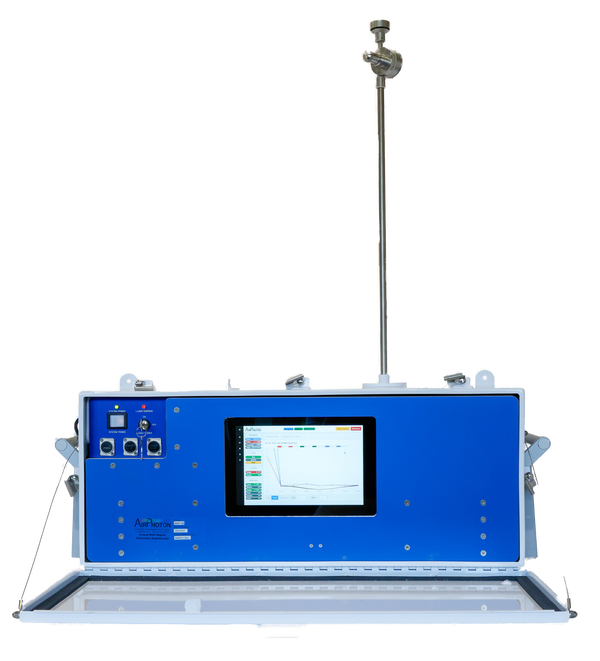Inverse Multi-Angle Polarization Polarimeter With GRASP Data Retrieval
The IMAP 100
The Inverse Multi-Angle Polarization Polarimeter (IMAP) measures scattering by particles as a function of
- Scattering angle
- Wavelength
- Linear polarization
Each measurement type above is made in up to 4 distinct size-bins from PM1 to PM10. Using the GRASP data retrieval software the IMAP will produce
- A complete size distribution of the the measured particles every two minutes
- Particle mass
- The real refractive index of the particles for each size distribution

IMAP Specifications
Angular ranges measured: 8
View angles centered at 5 °, 10.5 °,31.8°, 63.5°, 95.3°, 116.5°, 148.2°, 169.4°
Instantaneous field of view ~ 2°
Wavelengths: 3
470 nm, 529 nm and 621 nm
Polarization orientations: 2
Parallel and perpendicular to the scattering plane
Size measurements:
4 size bins ranging from PM1 to PM10
Instrument size: 25 cm x 44 cm x 30cm
Inlet height: 117 cm
Flow rate: 1.5 to 12 liters per minute
Data: Saved to an SD card. Real time data access via USB, RS485, RS232
Remote Access via Wifi or Cell Network: AirPhoton Com 100 module (not included)
Calibration: Operational daily provided by clean air reference
Gas calibration: CO2 and clean air every 3 – 6 months depending on operating conditions
Power: Mains AC power. 120- or 240-Volt systems (50 and 60Hz). 60 W maximum load.
A 5-Amp circuit breaker is included that also acts as the on-off switch.
Minimal Scattering Coefficient < 1E-7 Mm-1 (For any particle size)
Maximum Scattering Coefficient can be adjusted by reducing integration time. Typically
Between 2E –3 Mm -1 to 2E-2 Mm -1 are achievable by tuning the settings to your application
Frequently Asked Questions
Yes the instrument can be connected to manifolds. The instrument can also operate without the cyclone if that is a concern for the user.
The active flow rate of the instrument is limited by its internal blower (fan). If the user wants a flow rate outside the range of our blower, the user can always use an external pump or blower.
Yes, the instrument can run at lower pressure. Pressure correction may be needed for the aerodynamic behavior of the cyclone or for Rayleigh scattering considerations.
